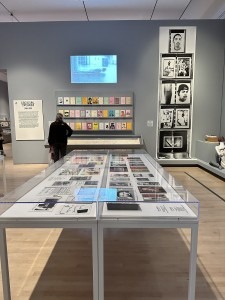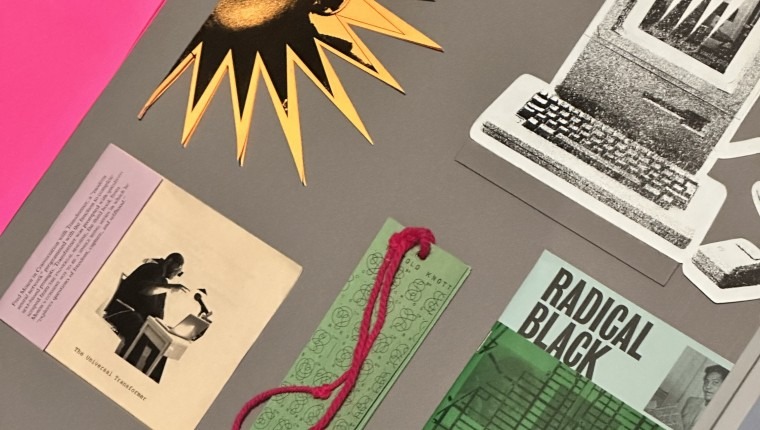For my birthday last month I got to see the Copy Machine Manifestos: Artists Who Make Zines exhibition before it closed on March 31st at the Brooklyn Museum. As a zinester and book artist, I knew I could not miss seeing the first exhibition dedicated to the rich history of five decades of artists’ zines produced in North America. It was my first time at the Brooklyn Museum, which is a beautiful classical building from 1893, adjacent to the Botanical Gardens. That Sunday afternoon there was a pop-up performance by members of the Brooklyn Symphony Orchestra, free with the museum’s $20/person general admission, and the lively sounds of string instruments filled the Beaux-Arts Court.

The double doors leading to Copy Machine Manifestos advised viewer discretion due to graphic content and language. Zines have always had a “read at your own risk” label inherent to their DIY nature. Curated by the art historians Branden W. Joseph and Drew Sawyer, the exhibition features thousands of “artists’ zines”, including work by Yoko Ono, Kathleen Hannah, Miranda July and Harmony Korine, and focuses less on amateur publications. Considering who the curators are, I believe their intent is to highlight the zine’s significance as a historical artifact within the art world, and less so to provide a comprehensive overview of zines.

Most of the zines are under glass or wall-mounted in display case shelves, many of which the covers are the only viewable element. Although this is most likely due to archival necessity to ensure the longevity of the work, it’s a bit awkward to confine tactile materials to “untouchable, institutionalized stasis.” The exhibition does counter this a bit by including a variety of engaging media, including photos, collage, videos, projections, installations, and sculptures, further contextualizing the zines in the subcultures they spawned from. Laid out chronologically, Copy Machine Manifestos begins with zines of the late 60’s and early 70’s at the advent of Xerography and the mail art scene, and moves through the avant-garde and subcultures of the 80’s and 90’s, to present day.


I could have spent the entire day in these galleries and still, to really take it all in, I would need several return visits. Overall, I left incredibly inspired, with an even greater understanding of historical context and cultural significance of zines. A small selection of zines from the exhibition were digitized and can be accessed through the Brooklyn Museum site. I was intrigued by the artists pushing the bounds of the medium, like Pat McCarthy, an artist and pigeon flyer in Bushwick, who brought his Canon copier onto his roof to make prints of pigeon wings onto porcelain. A video of the process played on a tv next to the work. Another non-book favorite was an envelope quilt by K8 Hardy, collected from mail sent by readers from 1994-2002. I also loved the inclusion of the Make a Zine/Take a Zine station, inviting visitors’ participation.

Topics of censorship, reproductive rights, and queer autonomy make zines particularly relevant in 2024. Their unique tactile forms offer an immediacy that remains unique and irreplaceable, even among memes and TikToks.






